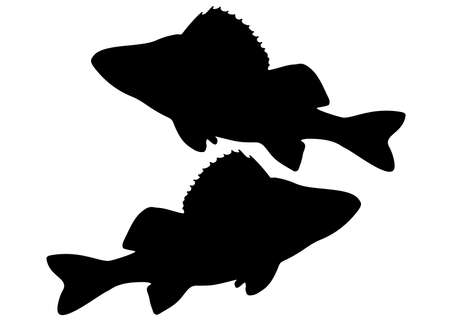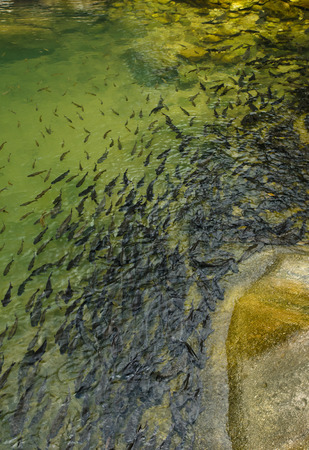Understanding Your Local Waters
If you’re new to fishing, one of the most common bait blunders is overlooking the importance of knowing your local waters. It’s tempting to grab whatever flashy bait catches your eye at the store, but not every lure or worm is going to work in every lake, river, or pond. Fish species vary widely across the U.S.—what works like a charm for bass in Florida might be completely ignored by trout in Oregon. Taking time to learn what fish actually live in your local waters and understanding their feeding habits can mean the difference between a full stringer and heading home empty-handed. Local anglers often have the inside scoop on which baits are hot and which are a waste of time, so don’t be afraid to strike up a conversation at the dock or bait shop. By tuning into the natural menu that’s already present in your fishing spot, you’ll set yourself up for way more success than just picking bait at random.
2. Overlooking Seasonal Shifts
If there’s one thing that can make or break your day on the water, it’s picking bait that matches the season. Many beginners get so excited to cast their lines that they forget fish are as tuned in to the seasons as we are—maybe even more so! When you overlook how the weather and water temperature change throughout the year, you might end up using bait that fish simply aren’t interested in. This classic blunder can turn a promising fishing trip into a quiet afternoon of watching your bobber do absolutely nothing.
Fish are cold-blooded creatures, which means their activity levels and feeding patterns shift with the seasons. In spring, for instance, fish are often hungry after winter and eager to bite on smaller, lively baits. Come summer, when the water warms up, they might go deeper and get pickier. As fall rolls around, fish start bulking up for winter and may chase bigger prey. But if you ignore these changes and stick with one type of bait all year long, you’re likely missing out on prime bites.
| Season | Bait Type | Common Mistake |
|---|---|---|
| Spring | Small jigs, live worms | Using large or slow-moving baits |
| Summer | Crankbaits, spinnerbaits | Fishing too shallow during midday heat |
| Fall | Larger minnows, crankbaits | Sticking with small baits from summer |
| Winter | Spoons, small live bait | Not downsizing enough or using lively bait in cold water |
The key is to pay attention to what’s happening around you—notice the water temp, watch what insects or baitfish are around, and don’t be afraid to switch things up as conditions change. Remember: fish adapt to their environment, and so should your bait choices. By staying tuned in to seasonal shifts instead of ignoring them, you’ll avoid this common rookie mistake and reel in a whole lot more fun (and maybe dinner) along the way!

3. Getting Stuck on Store-Bought Bait
One of the most common pitfalls for new anglers is sticking exclusively to store-bought bait. It’s easy to see why—the shelves at your local tackle shop are stocked with all sorts of colorful, packaged options promising the catch of a lifetime. But here’s the scoop: relying only on these convenient choices can sometimes mean missing out on what local fish are actually biting. American lakes and rivers have their own personalities, and so do the fish in them! Often, native species prefer natural or live bait found right in their environment—think worms from your backyard, crickets caught under a log, or minnows scooped from the shallows. Seasoned anglers know that experimenting with different baits isn’t just practical—it’s part of the fun and tradition of fishing in the U.S. So, next time you’re gearing up, don’t be afraid to get your hands dirty and try something local or live. You might be surprised by how much more action you’ll see when you break away from the pre-packaged routine.
4. Misjudging Bait Size and Presentation
It’s a classic rookie mistake—grabbing the biggest worm in the bait box or tossing out a tiny lure when you need something flashier. When it comes to fishing, size really does matter, and so does how you present your bait. Using the wrong bait size or failing to mimic natural movement can leave you with nothing but stories about the one that got away.
Why Bait Size Matters
Fish aren’t just opportunistic feeders—they’re cautious, too. If your bait is too large, it can intimidate smaller fish or simply look unnatural. On the flip side, using bait thats too small might not attract bigger catches at all. Here’s a simple breakdown:
| Bait Size | Best For | Common Mistake |
|---|---|---|
| Small | Panfish, trout, small bass | Ignored by larger fish; easy for little nibbles to steal |
| Medium | Bass, catfish, walleye | If too big or too small, may seem suspicious to target fish |
| Large | Pike, muskie, trophy bass | Scares off small and even medium-sized fish; wasted effort if big fish aren’t around |
The Art of Presentation
Even if you’ve nailed the right size, sloppy presentation can ruin your chances. Fish are sharp-eyed and sensitive to unnatural movement. If your worm is balled up on the hook or your minnow is spinning like a top, you’re more likely to spook them than lure them in. The trick is to make your bait act like it belongs in the water.
Common Presentation Pitfalls:
- Bait bunched up on the hook: Makes it look fake and unappetizing.
- Lures retrieved too quickly or slowly: Can tip off fish that something’s not right.
- Bait not matching local forage: Fish know what’s normal in their waters—anything odd stands out.
The Takeaway
Matching your bait size to your target species and nailing that natural presentation takes some practice—but it’s key to turning empty hooks into full stringers. Next time you head out, pay attention to what’s swimming where you’re casting and make sure your offering fits right in.
5. Ignoring Local Advice and Regulations
One of the biggest bait blunders beginners make is overlooking the importance of local fishing advice and regulations. While it might be tempting to simply grab a generic bait from the store shelf, every region in the U.S. has its own unique ecosystem, fish species, and even legal requirements about what you can use as bait. Not following these rules isn’t just risky—it could actually get you fined or spoil your fishing trip altogether.
Seasoned local anglers are like gold mines of information. They know which baits work best for the waters you’re fishing, whether that’s nightcrawlers for Midwest lakes or shrimp along the Gulf Coast. Chatting with them at the dock or local tackle shop can help you avoid wasting time and money on ineffective choices. Plus, they’ll often clue you in on little tricks and seasonal changes that make all the difference.
On top of tips and tricks, don’t forget to check the latest state or county fishing regulations. These guidelines aren’t just red tape—they’re there to keep local fish populations healthy and ecosystems balanced. For example, some states ban using live bait in certain lakes to prevent invasive species from spreading, while others have size restrictions on what you can catch or use. A quick look at official websites or a call to your local fish and wildlife office can save you hassle down the road.
If you want to blend in with experienced anglers (and stay out of trouble), always follow posted rules and ask around before heading out. Embracing local knowledge and regulations is not only respectful—it’s how you become part of the fishing community and ensure those waters stay full of fish for years to come.
6. Being Impatient with Trial and Error
One of the most common pitfalls for beginners is expecting instant success with bait selection. The truth is, finding the right bait is rarely a one-and-done deal—it’s more like a journey filled with surprises, small victories, and yes, a few flops along the way. Fishing in the U.S. is as much about patience and learning as it is about landing that big catch. Local anglers know that what works on one lake or river might not work just a few miles away, and even “sure thing” baits can fall flat when the weather shifts or fish just aren’t biting.
If you get frustrated after a couple of slow outings, you’re not alone. But remember: every cast, whether successful or not, teaches you something valuable about your local waters and its finned residents. Don’t be afraid to experiment with different types of bait—live worms, artificial lures, or even regional favorites like corn or dough balls. Pay attention to what experienced fishers around you are using, but don’t be discouraged if your results differ at first.
Patience truly pays off in fishing. Embrace trial and error as part of your angling adventure, not just a hurdle to overcome. Every mistake helps refine your approach and brings you closer to that satisfying moment when you find the bait that works best for your favorite fishing spot. Stick with it, stay curious, and enjoy the process—the fish will eventually reward your persistence!

